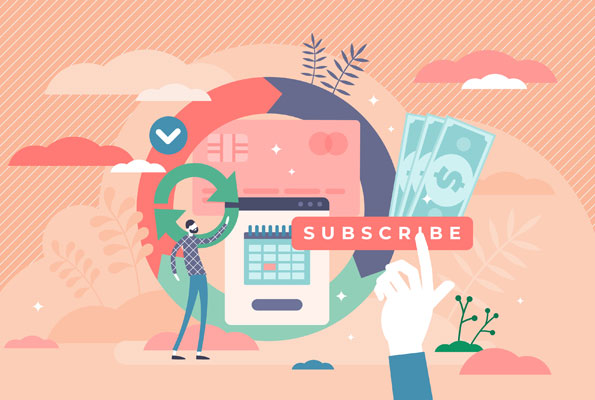Everyone has experienced a situation where they call customer support to try and fix a billing or processing glitch. Unfortunately, the call turns into a “telephone” game that bounces you from department to department rather than being a short transaction. You keep saying the same thing, feeling increasingly frustrated as you spend more time and come up empty-handed.
Customer retention decreases when a business overlooks a straightforward request, like changing or terminating a subscription. A third of customers will quit a brand they adore after one terrible customer service encounter. More than half will switch to a competitor after multiple bad experiences.
Why is it so important to keep customers? First, it costs at least six times as much to acquire a new customer as it does to retain an existing one. Therefore, just a 5% improvement in client retention leads to a 25% increase in revenue. Additionally, repeat consumers are more likely to make larger purchases and spend more money than new ones.
Companies that care about their consumers adapt their service and product offerings to meet their demands. Still, they change their invoicing procedures to consider emerging technology and the preferences of their clients. Subscription billing software increases client retention by automating processes and enhancing customer experiences.
Here are three ways in which subscription billing increases customer retention:
More effective customer touchpoints
Because the subscription model is a critical component of their sales strategy, SaaS companies that depend on recurring payments might quickly lose clients due to billing errors. One way to increase client retention is to reduce the possibility of relationship-ending payment processing mistakes. In addition, subscription billing software reduces friction in the client’s experience.
Your customer relationship management (CRM) platform can gain information about a customer’s payment history and interactions by integrating subscription billing software. Centralizing data enables your team to maintain greater alignment and knowledge to deliver better client experiences.
Customers that use subscription billing software also gain from automatic communications with account updates that confirm payment receipt, announce a bill due date, or check changes to account preferences. Customers receive these communications to stay informed about their accounts and to help establish trust, which strengthens their bond with your company. In addition, your customer teams can track open rates to determine the optimal delivery channels, enhance personalization, and spot opportunities to upgrade services when your subscription software integrates with your CRM.
Automate to save time and cut down on mistakes
Your billing methods must change as your business grows. Businesses who manage invoicing only through spreadsheets are put under pressure by an expanding customer base. The challenge is exacerbated when a developing company collects customer information in one system and payment information in another.
Your accounting and IT teams will waste time reassembling fragmented data to align your systems as the likelihood of inaccurate or out-of-date data rises. Additionally, if erroneous data is present in your designs, clients are likely to experience more severe issues and lose business to rivals, slowing the expansion of your organization.
Utilize technology that automates subscriptions rather than manually searching spreadsheets to save your team time and minimize errors. Businesses that automate payment processing get paid faster, experience fewer problems, and provide consumers the freedom to upgrade or downgrade their services as required.
Utilize consumer information to guide retention tactics
Every business aspires to provide excellent customer service. However, as more people shop online, companies without access to customer data will find it difficult to assess and enhance customer journey touchpoints. The problem is much more difficult because data is stored on separate platforms in silos.
From a billing standpoint, unavailable data prevents a good picture of revenue health and customer happiness. It becomes challenging to find flagged or past-due accounts by searching multiple systems. Providing real-time data and responding strategically to issues is impossible without knowing the clients and goods affecting your revenue.
You can comprehend and handle customer accounts thanks to centralized customer data. You can build stronger bonds with dissatisfied customers before they depart if you have a system that links payment history to the other information about them in your customer relationship database.
Keep an eye out for subscription software that provides insights, and answers questions such as:
1. How do you identify common client problems and fix them?
2. How do you earmark the channels and payment methods that customers prefer to customize their experiences?
3. How do you market effectively and take sales initiatives to help you concentrate your efforts?
4. How to establish loyalty programs for your audience and attract the most lucrative clients?
5. How do you gauge Customer lifetime value (CLV) and calculate the average CLV and cost per acquisition?
6. How do you comprehend and lower cancellations and find out why and when consumers cancel?
7. How does a business ensure time is saved, strategic planning is strengthened, and customer teams have the resources to provide more memorable customer experiences thanks to centralized access to this information?
Your exceptional experiences, including your business’s billing methods, keep customers coming back. By integrating subscription billing software into your customer relationship management, your arm your staff with the tools they need to enhance the customer experience—from a single caller to your broader retention strategy. Moreover, your employees can tailor every client engagement, reduce errors, and make future success plans thanks to centralized data analytics.



